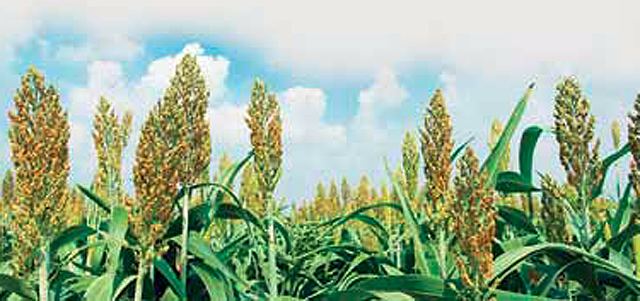


Move over quinoa. According to a recent Guardian article American chefs say that sorghum is the next ‘wonder grain’. They extoll its health benefits, its versatility in cooking (among other things, it pops like corn) and its eco-friendliness due to being exceptionally drought-tolerant.
All of which is no-news in Western India states like Maharashtra and Gujarat where sorghum, or jowar, has long been valued for all these things, and more. Like the way some varieties can be eaten when green, just as Americans ate sweetcorn: ideally on the farm itself, racing to plunge fresh plucked corn ears in boiling water before the delicate sugars inside turn into tasteless starch.
Today corn has been bred to be unnaturally sweet, even long after picking, but with these special varieties of jowar, like the one called Andhali Wani, you still get that delicate balance of sweet and starchy. Jowar is a millet, a class of grains named for their numerous — mille or million — tiny seeds. Historically this made them less desirable than rice or wheat, whose large grains contain abundant starch, but it made millets healthier and better to eat when fresh.
Eating green wheat is like chewing gum, but green jowar is juicy and only slightly chewy, filling your mouth with the fresh flavours of Western India’s winter, really its spring. It is also slightly smoky because farmers roast the freshly plucked ears of jowar on wood-fires before beating them to release the small seeds. In farms near Surat in Gujarat, where it is called ponk, or Solapur or Nagpur in Maharashtra, where it is hurda, you can eat this in the fields, with a twist of lime and some crunchy, spicy sev for contrast, and big glasses of buttermilk to wash it all down.
Those who live in cities like Mumbai are not so lucky, but systems are in place to bring it in, sometimes using angadias, the confidential couriers who otherwise transport diamonds between Mumbai and Surat. Connoisseurs have it delivered direct, or go to the market early to get their fix. Other ways of eating it have also been devised — clumping the green seeds together with besan batter to fry as ponk pakodas, or grinding them into a paste with onion and spices to make little, vividly green pancakes.
The future of ponk could be precarious. Gujarat’s industrialistion has eaten into its fields and farmers have little interest in millets, because of the Indian government’s inexplicable fixation on only really supporting rice and wheat. But Gujarat’s far-flung and food-loving diaspora has provided some future. There are now techniques for preserving ponk and sending it across the world, and with this new focus on sorghum, perhaps chefs abroad will also discover its chewy charms.
Or it could be another reason to do a winter trip to Western India and head out into its fields where enterprising farmers now advertise hurda or ponk parties. Far from America’s food trends, this is where sorghum has always been celebrated at its seasonal best.
Source: The health benefits and cooking versatility of sorghum, the next ‘wonder grain’ – ET Blogs

